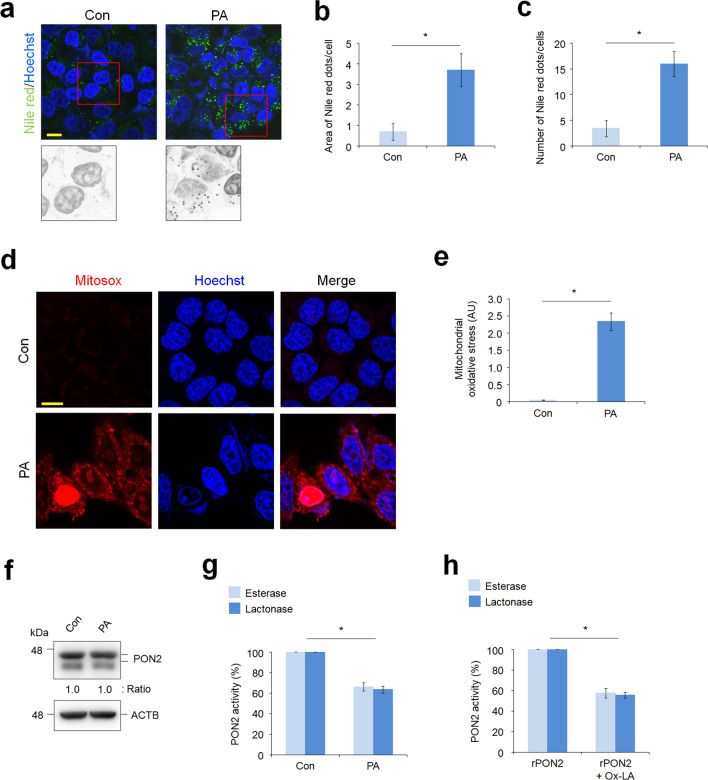Figure 1.
Palmitic acid (PA)-mediated lipotoxic condition inhibits the paraoxonase-2 (PON2) activity in hepatocytes. (a) Confocal fluorescence analysis showing PA-induced lipid accumulation. L02 hepatocytes were treated with PA (100 μM) for 24 h and stained with Nile red to determine lipid accumulation. Representative images from three independent experiments are shown (scale bar = 50 μm). (b,c) Quantification of Nile red staining intensities is measured by the area of Nile red dots per cells (b) and by the number of Nile red dots per cells (c). (d) Confocal fluorescence images showing the generation of mitochondrial superoxide, which was analyzed using MitoSox staining. L02 cells were treated with PA for 24 h and stained with MitoSox. Cell nuclei were stained with Hoechst 33342. Representative images from three independent experiments are shown (scale bar = 50 μm). (e) Bar plots of the quantification of MitoSox staining intensities are shown. (f) Immunoblot analysis of PON2 expression in cells treated with or without PA. ACTB was used as a loading control. Band intensities of the indicated proteins are shown below. (g) Endogenous PON2 activities in L02 cells treated with or without PA for 24 h. Bar plots of the average esterase and lactonase activities are shown (n = 3). (h) Purified recombinant PON2 activities incubated with or without oxidized linoleic acid (Ox-LA) for 10 min. Bar plots of the average esterase and lactonase activities of recombinant PON2 (n = 3). Error bars indicate standard deviation. Statistical significance between two groups was determined with two-tailed Student’s t test. *p < 0.05.

